Based on the 2024 Census of Population (2024 POPCEN), the total population of Davao Occidental as of 01 July 2024 was 317,598. The total population of Davao Occidental accounted for about 6.0 percent of Davao Region’s population in 2024.
The 2024 total population of the province is higher by 439 persons compared with the population of 317,159 persons in 2020 and by 1,744 persons compared with the population of 316,342 persons in 2015. (Table 1)
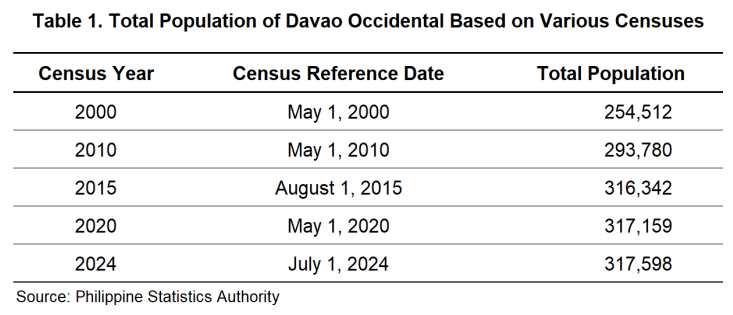
The total population of Davao Occidental increased by 0.03 percent annually, on average, during the period of 2020 to 2024. By comparison, the rate at which the provincial population grew during the period of 2015 to 2020 was slightly higher at 0.05 percent. (Table 2)
If the population continues to grow at an annual rate of 0.03 percent, the province will double its size in 2,310 years.

Among the five municipalities comprising the province, Malita had the biggest population in 2024 with 118,438 persons, followed by Jose Abad Santos with 72,552, Santa Maria with 58,886, and Don Marcelino with 45,681. Sarangani had the smallest population with 22,041. (Table 3)
Thirty-seven (37) in every 100 persons in the province are living in the Municipality of Malita.

From 2020 to 2024, Santa Maria was the fastest growing municipality in the province with an average annual population growth rate (PGR) of 0.56 percent. It was followed by Don Marcelino with a PGR of 0.07 percent and Malita with a PGR of 0.05 percent. On the other hand, Jose Abad Santos and Sarangani posted a negative growth with a PGR of -0.27 percent and -0.51 percent respectively.(Table 4)
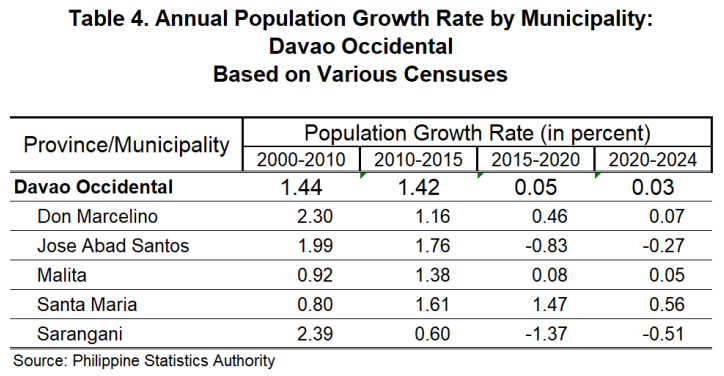
Of the 105 barangays, three barangays posted more than 10,000 inhabitants (Table 5), while four barangays with less than 1,000 population (Table 6)
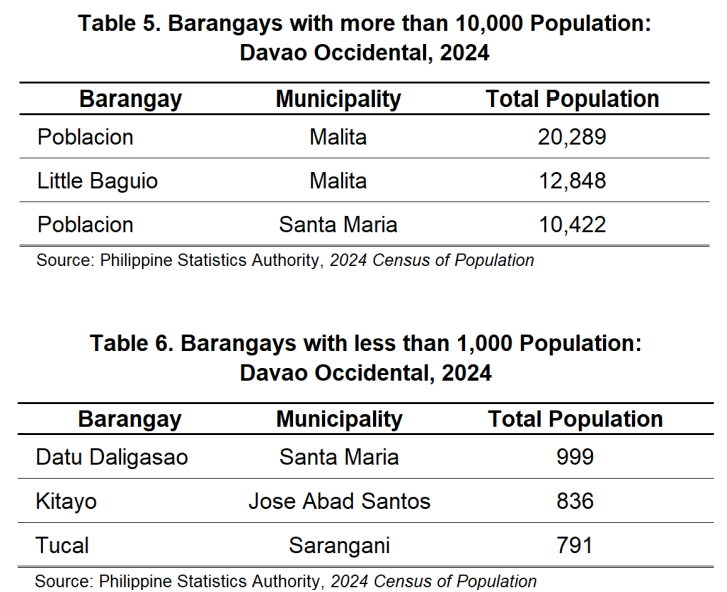
With a total land area of approximately 2,163.45 square kilometer, the population density of Davao Occidental in 2024 was posted at 147 persons per square kilometer. This is same population density posted in 2020.
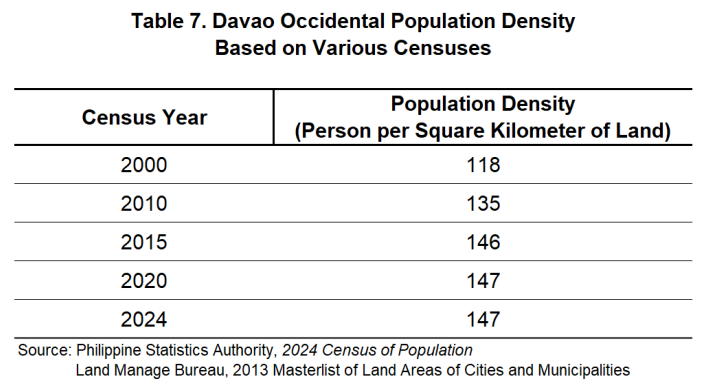
The population figures used in this report were from the results of the 2024 Census of Population (2024 POPCEN). To derive the population density of the number of persons per square kilometer of land, only the population residing in Philippine territories were considered at the national level. Hence, Filipinos in Philippine embassies, consulates, and missions abroad were excluded from the population count. Meanwhile, the land areas were based on the 2013 Masterlist of Land Areasof Cities and Municipalities provided by the Land Management Bureau (LMB) to the Philippine Statistics Authority (PSA).
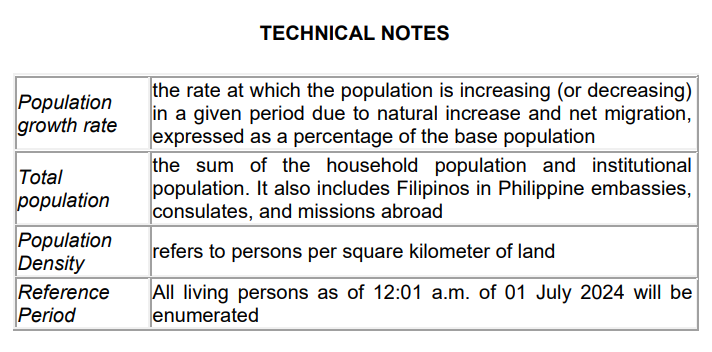
The 2024 POPCEN was undertaken by the Philippine Statistics Authority pursuant to Republic Act No. 10625, also known as the Philippine Statistical Act of 2013, Executive Order No. 352 – Designation of Statistical Activities That Will Generate Critical Data for Decision-Making of the Government and the Private.
President Ferdinand R. Marcos Jr. has declared official for all purposes the population counts by province, city/municipality, and barangay based on the 2024 POPCEN under Proclamation No. 973 dated 11 July 2025. The population counts were based on census questionnaires administered by about 70,000 enumerators deployed during the nationwide census taking.
The PSA extends its deepest appreciation to the public for their continued support and participation in the 2024 POPCEN. This census marks the 16th Census of Population in the Philippines since the first census in 1903.
Approved for Release:
JESSIE A. MADULIN
Chief Statistical Specialist
